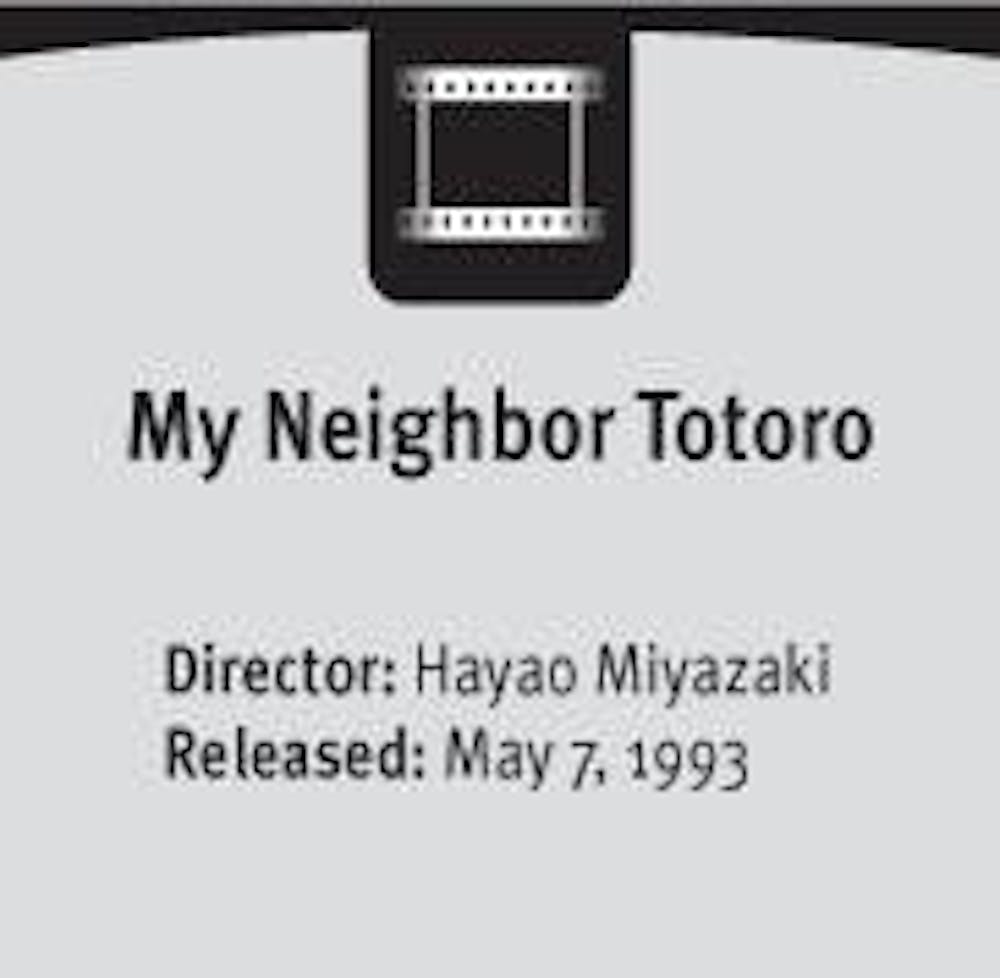Classic Flicks: My Neighbor Totoro evocative of a simpler time

Why has animation been so popular these days? Recently, Avatar, a 3-D animation-heavy film about a planet of blue human-alien hybrids, became the highest grossing film of all time. Pixar, the studio that produced animated films such as Toy Story and Finding Nemo, has also produced great commercial successes worldwide.
After re-watching Hayao Miyazaki's film My Neighbor Totoro, I began to realize just what it is that makes such films so successful. I don't believe the greatest animated films achieve such wide success with audiences simply because throngs of children drag their parents to the theaters to watch the same cutesy films featuring talking animals and beasts for the umpteenth time in a row.
It's quite possible for one to mistake Miyazaki's films as manufactured for a juvenile audience (as I did, once upon a time). In fact, to the superficial observer, Miyazaki's films might even appear to be spruced-up versions of childish entertainments like Yu-gi-oh or Digimon. Though some may beg to differ, I would venture that a good portion of Miyazaki's audience is comprised of adults who secretly and thoroughly enjoy the opportunity to escape into a world that is free of work, stress and monotony. And therein lies the genius of his films: They can simultaneously captivate children and enchant adults.
Summarizing a Miyazaki film is equivalent to sketching a simple portrait of what is a really a complex composition of sight and sound. In My Neighbor Totoro, Tatsuo Kusakabe (voiced by Tim Daly, "The Sopranos"), university professor and his two young daughters, Satsuki (Dakota Fanning, I Am Sam) and Mei (Elle Fanning, Babel), move to a house in Japan's countryside so that they can live closer to their mother (Lea Salonga, Mulan), who is recovering from an illness at a nearby hospital. According to neighbors, their new home is "haunted" — but not "haunted" in the manner of an American horror flick.
The storytelling conventions of Japanese master can appear foreign to westerners; for instance, villains rarely feature in Miyazaki's films. His films brim with sunny happiness and they embrace life: I can't help but recall the carefree innocence of childhood when watching this film.
Furthermore, Miyazaki and his fellow animators at Studio Ghibli take their work quite seriously. Miyazaki himself meticulously draws tens of thousands of frames by hand, and — unlike his American counterparts — did not add computers to his animation arsenal until 1997.
It is difficult not to be tickled by the lovely, optimistic films of Miyazaki. His works completed with Studio Ghibli are worth watching at least once.
His films have been delighting international audiences since the early 1970s, and they will continue to do so for current and future generations. I can confidently recommend Miyazaki's oeuvre: Castle in the Sky (1986), My Neighbor Totoro (1988), Kiki's Delivery Service (1989), Princess Mononoke (1997), Spirited Away (2001), Howl's Moving Castle (2004), Ponyo (2008). Give them a try, and you may find yourself unable to do anything but smile, laugh and reminisce.
Joseph Allencherril is a Will Rice College sophomore. Classic Flicks is a column reexamining and rediscovering the best that cinema has to offer.
More from The Rice Thresher

Founder’s Court goes alt-rock as bôa kicks off U.S. tour at Rice
Founder’s Court morphed into a festival ground Friday night as British alt-rock band bôa launched the U.S. leg of their “Whiplash” tour. The group headlined the third annual Moody X-Fest before what organizers estimate was “a little bit over 2,000 students” — the largest turnout in the event’s three-year history.
Rice launches alternative funding program amid federal research cuts
Rice is launching the Bridge Funding Program for faculty whose federal funding for research projects has been reduced or removed. The program was announced via the Provost’s newsletter April 24.
This moment may be unprecedented — Rice falling short is not
In many ways, the current landscape of American higher education is unprecedented. Sweeping cuts to federal research funding, overt government efforts to control academic departments and censor campus protests and arbitrary arrests and visa revocations have rightly been criticized as ushering in the latest iteration of fascism.


Please note All comments are eligible for publication by The Rice Thresher.